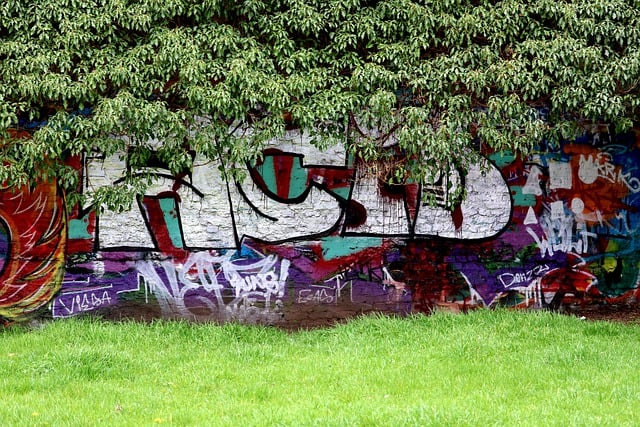Art has always been a pathway to creativity, passion, and personal expression. But did you know that it can also be a valuable investment? While the world of art can seem daunting, it presents unique opportunities for capital appreciation and diversification within your investment portfolio. Whether you’re an avid collector or a curious novice just testing the waters, understanding the nuances of investing in art can enrich your life no end, and potentially yield financial rewards. Here are some thoughts about navigating the multifaceted landscape of art investment.
Capital Appreciation
Investing in the “right” art can lead to significant capital appreciation over time. With careful selection, professional advice, and patience, your chosen piece may increase in value. However, it’s essential to remember that there are no guarantees in the art market.
Art is Subjective
The value of art is largely subjective, hinging on what a willing buyer is prepared to pay. Several factors, including the artist’s reputation, market trends, and the condition of the piece, play an important role in determining its worth. As art is a collectible, its value can hold or increase as it ages or becomes rarer, but again, remember that certainty is not guaranteed.
Financial Market Volatility
One of the most appealing aspects of art as an investment is its relative stability as compared to traditional financial markets. This reduced volatility allows art investors to avoid the sleepless nights often caused by market dips, providing a more serene investment experience, particularly for the risk averse investor.
Limited Data and Information
In contrast to the wealth of information available in financial markets, art investing often lacks comprehensive analysis. Investors must navigate their purchases without the extensive research and technical data that accompanies stocks and bonds, making informed decisions based on limited data.
Think Long-Term
As with all investing, have a long-term view. Art should not be seen as a quick route to wealth. As a less liquid asset class, selling art can be a lengthy process involving valuers, dealers, and legal considerations. Unlike stocks, which are easily traded on an exchange at the click of a button, selling artwork requires careful planning and patience to achieve the best price.
Look After Your Art
Owning art gives you control over a tangible asset, one that you can touch and feel and admire; this can be immensely rewarding. However, owning or being a custodian of art comes with responsibility, caring for your collection, ensuring proper display, maintenance, and insurance. Protecting your investment from potential disasters like fire or flood is crucial for retaining its value.
Insurance
Depending on the value of your collection, you may need additional coverage beyond your standard home insurance policy. Some insurers require high-value pieces to be stored in a vault. It’s important to consult your agent to understand what is covered and ensure your artwork is adequately protected from theft or damage.
Investment Diversification
Adding art to your investment portfolio can reduce overall risk through diversification. By spreading savings across different asset classes, including art, you can mitigate volatility and protect your investments during economic fluctuations.
A Hedge Against Inflation
Art can serve as a hedge against inflation, preserving value that might otherwise diminish in monetary-based assets. Its tangible nature makes it a solid addition to a wealth preservation strategy.
Include Your Artwork in Your Estate Plan
Plan for the future of your artwork after your lifetime. Consider how to pass on your collection to the next generation. Will your heirs appreciate the same pieces, or will they face challenges with capital gains taxes on art they don’t value? Professional art consultants can help identify suitable options for donating or bequeathing your collection.
The Role of Culture and Parenting in Narcissism
Watch For Emerging Artists
For novice investors, attending art fairs and galleries, and immersing yourself in the world of art can be treasure-troves of distinctive, affordable pieces from emerging artists. Some may even offer payment plans for more expensive artwork; just ask.
Do Your Homework
Investing in art requires careful consideration. Risks do exist, and it takes time to develop expertise through involvement in the art sector, learning from experienced collectors, and doing your own research.
Start To Invest Early
Investing in art from a young age offers many advantages. Purchasing a few pieces each year allows you to build a diverse collection over time without stretching your budget beyond what you can afford. This gradual but intentional approach will help you develop a keen eye for art as you explore different styles and artists. As you gain experience and knowledge, your investment can appreciate building a solid foundation for your financial future. Ultimately you would have built a collection, a prized asset and a source of joy for years to come.
Buy Art That You Love
Ultimately, the best reason to invest in art is because you like it. Acquire pieces because they resonate with you, not solely for their potential to appreciate. Your collection should reflect your taste and enrich your everyday life. Just imagine the beauty around you. Seek professional guidance but also trust your own instincts. Even if a piece doesn’t significantly appreciate, the pleasure it brings is priceless.
Nimi Akinkugbe has extensive experience in private wealth management. Through her platforms, she seeks to empower people regarding their finances and offers frank, practical insights to create greater awareness and understanding of personal finance.
For more personal finance tips visit:
Website: www.moneymatterswithnimi.com
Twitter: @MMWITHNIMI
Instagram: @MMWITHNIMI
Facebook: MoneyMatterswithNimi
